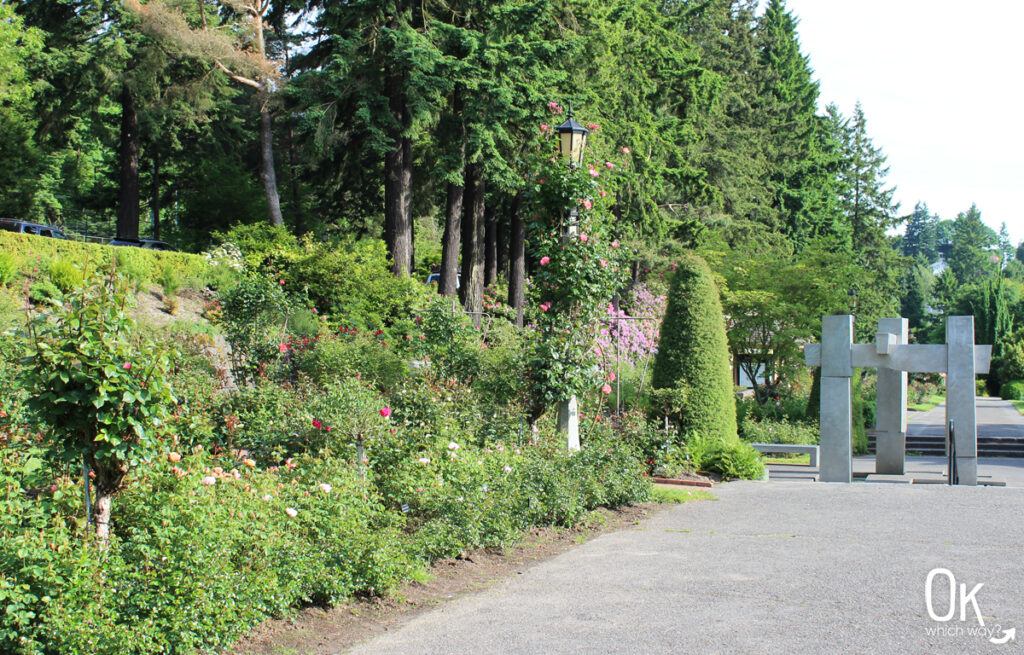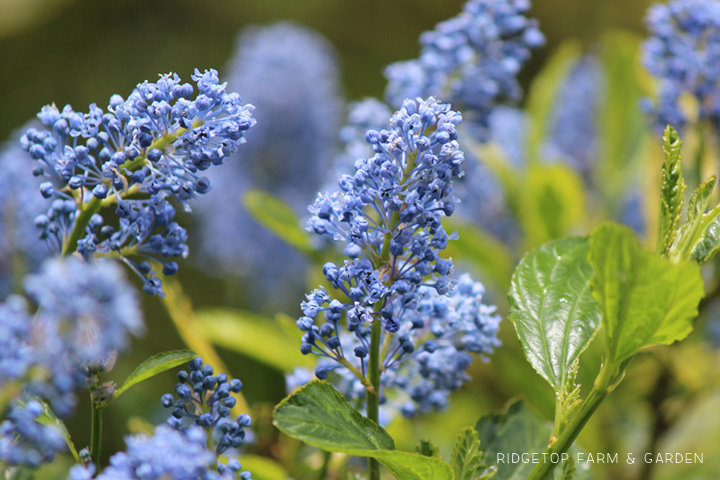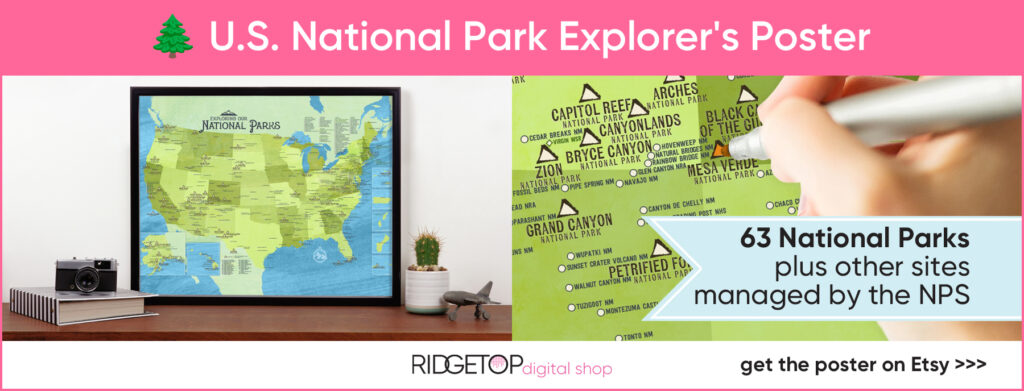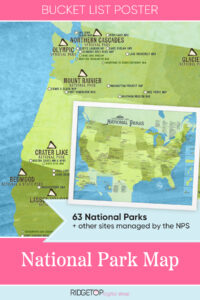
Visiting Bonneville Dam in Oregon
If you are traveling along the Columbia Gorge, an interesting place to visit is Bonneville Lock and Dam. It is located about 40 miles east of Portland, on the Columbia River, between Oregon and Washington. The location is along the Lewis and Clark National Historic Trail.
This post may contain affiliate links. When you make a purchase using one of these affiliate links, we get paid a small commission at no extra cost to you.
Construction of the lock and dam, used for river navigation and hydropower, was complete by the U.S. Army Corps of Engineers in 1938. A second powerhouse was operational in 1981, and in 1987 Bonneville Lock and Dam was declared a National Historic Landmark.

Visiting Bonneville Lock and Dam
Location: Washington Shore Visitor Complex in North Bonneville, Washington and Bradford Island Recreation Area in Cascade Locks, Oregon. The seasonal visitor center at the lock is also located in Cascade Locks.
Established: 1938
Parking: free parking in the lots
Entrance Fee: free
Amenities: Restrooms and picnic tables
WHO WAS CAPTAIN BENJAMIN BONNEVILLE?
Years after graduating from West Point, Captain Benjamin L.E. Bonneville (1796-1878) set out to explore the west, under the guise of being a fur trader. From 1832–1835, Bonneville explored much of what was later the Oregon Trail. He worked for an American man that was a rival of the very large Britain-based Hudson’s Bay Company. HBC had a trading post we visited at Fort Vancouver and, at the time, the trader’s from HBC were not allowed to trade with the American fur trappers. Although the fur trading didn’t go well, Bonneville’s expedition wasn’t a complete failure. He took extensive notes on agricultural areas, timber, and fur trading in the west.
THINGS TO SEE AT BRADFORD ISLAND VISITOR CENTER
Bonneville Powerhouse
To get to the Visitor Center on Bradford Island, you have to stop at a security checkpoint. Then, the road continues on right over the powerhouse. I’ll admit it gave me a slight case of the heebie-jeebies.
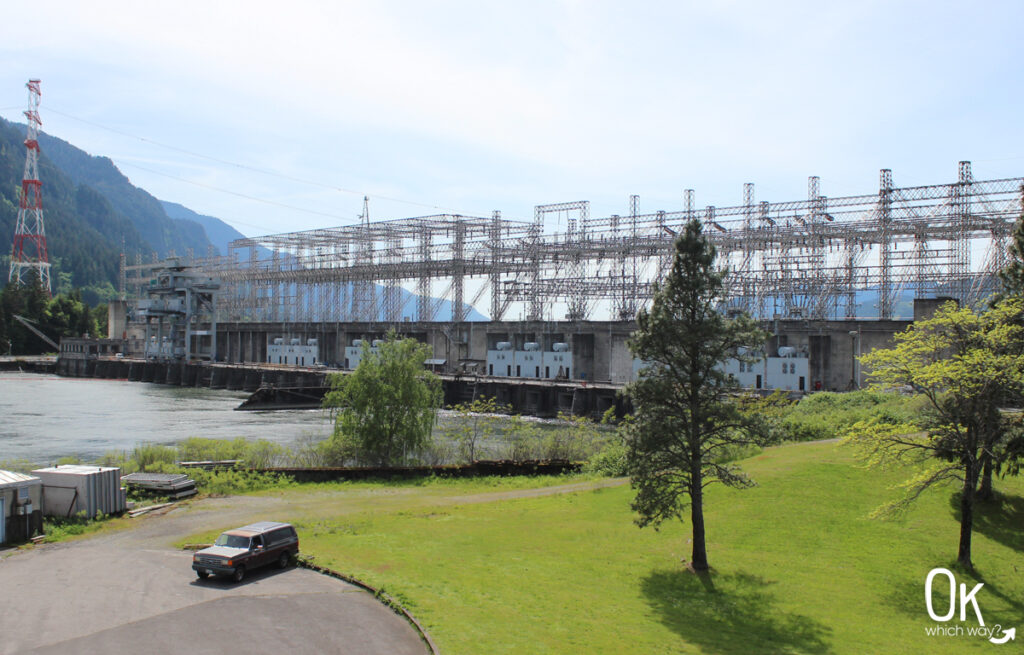
Dam Construction & Mechanics
Interested in mechanics and engineering? The visitor centers have information explaining various parts of the lock and dam, such as this bus bar and post insulators. The bus bar carries electric current from transformers to transmission lines. The post insulators keep the bus bar from touching anything.

Sketches from the Corps of Discovery
Lewis and Clark traveled along the Columbia River on route to the Pacific Ocean. So, the visitor centers have information detailing their discoveries in the area. These two reproductions of pages from their journals are in almost every museum we’ve visited that have anything to do with Lewis and Clark.
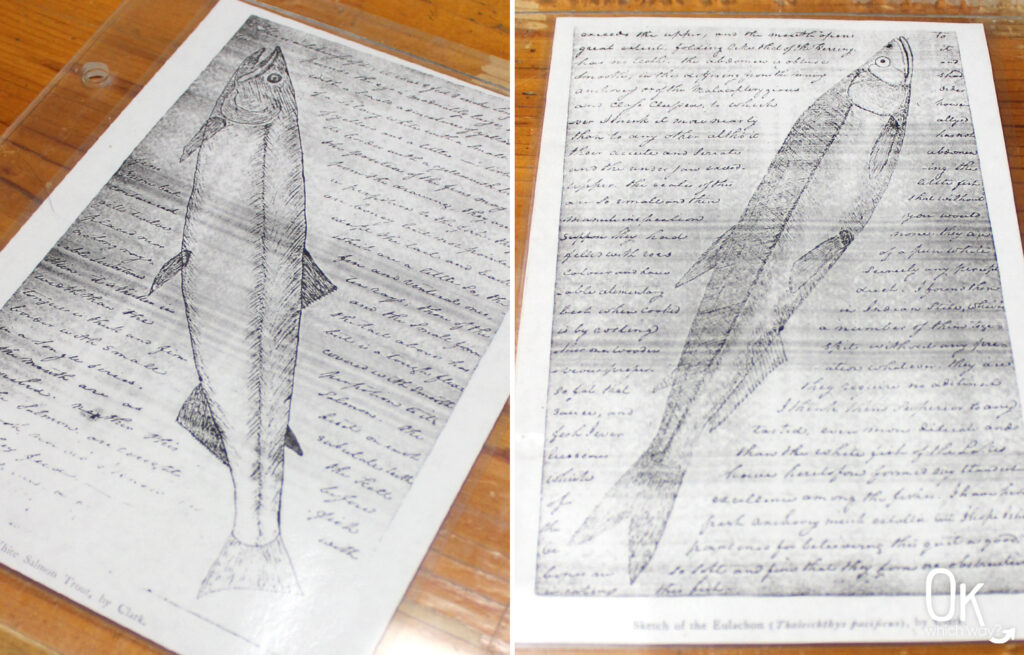
Right: Eulachon (or Candlefish), by William Clark. Excerpt from Clark’s Journal, February 25, 1806 “I purchased of the Clatsops this morning about half a bushel of small fish which they had caught about 40 miles up the Columbia in their scooping nets. As this is an uncommon to fish to me and one which no one of the party has ever seen. On the next page I have drawn the likeness of them as large as life…” “I found them best when cooked in Indian style, which is by roasting a number of them together on a wooden spit without any previous preparation whatever. They are so fat that they require no additional sauce and I think them superior to any fish I ever tasted…”
Fish Ladder
Fish ladders are used to get adult fish heading upstream passed the dam. The fish swim and jump up the ladder similar to the way they swim and jump up rapids of a river. Common fish that use the ladder are Chinook salmon, steelhead, shad, sockeye, lamprey, and sturgeon.
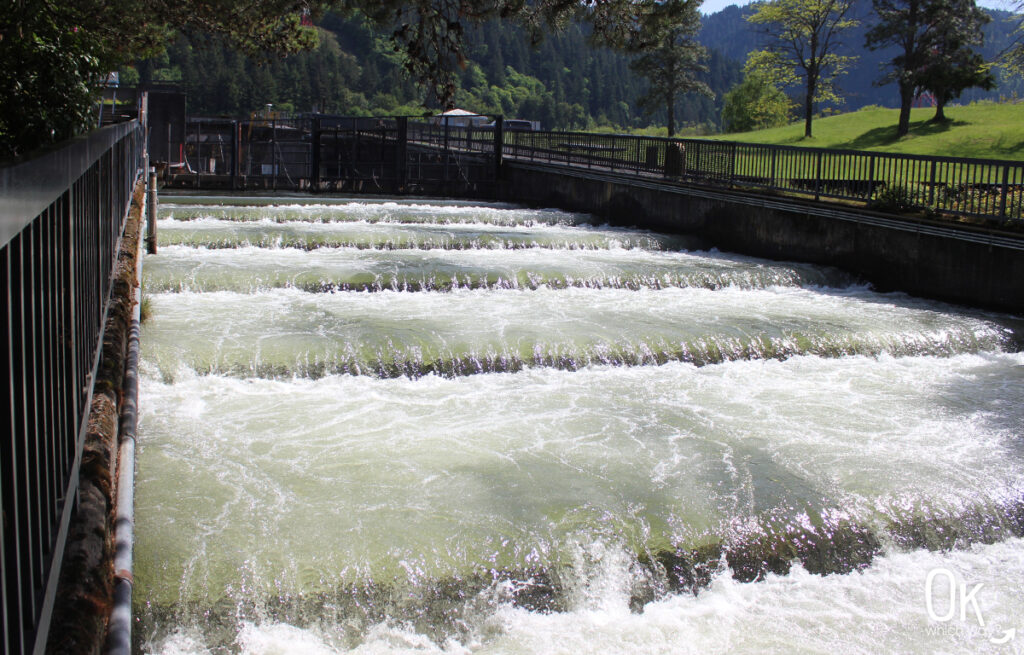
Inside the visitor center is an underwater viewing area of the fish ladder. However, there’s no guarantee there will be fish migrating through the day you visit.
Workers at the dam use the underwater window to count fish coming through the ladder. Biologists use this information to track fish runs.
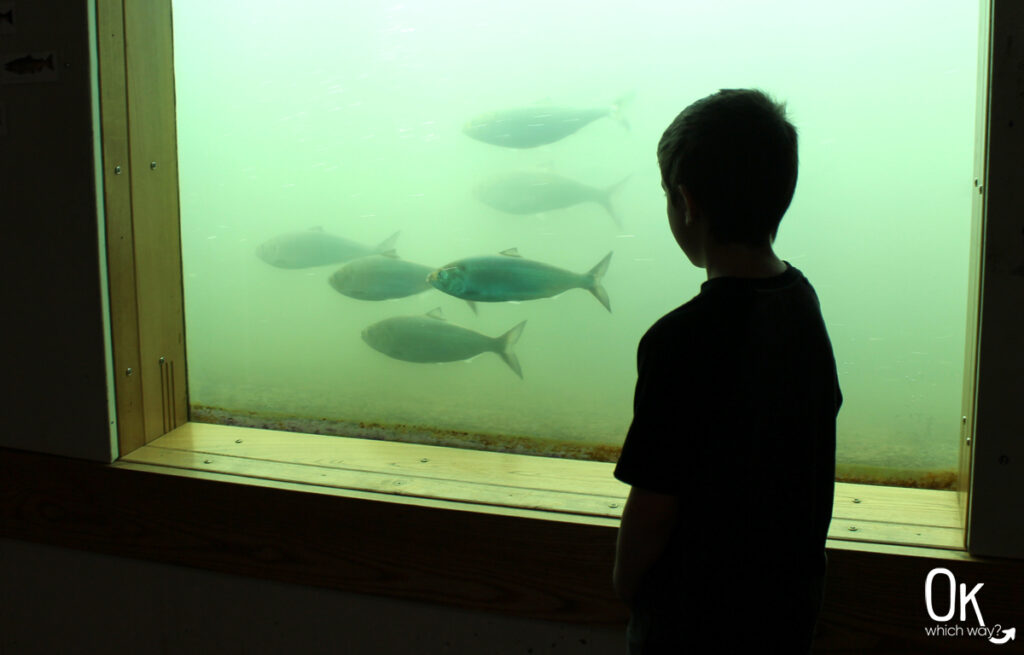
Old Turbine
Located outside is a gigantic turbine that was in use for 60 years. It helped create power for 25,000 homes.
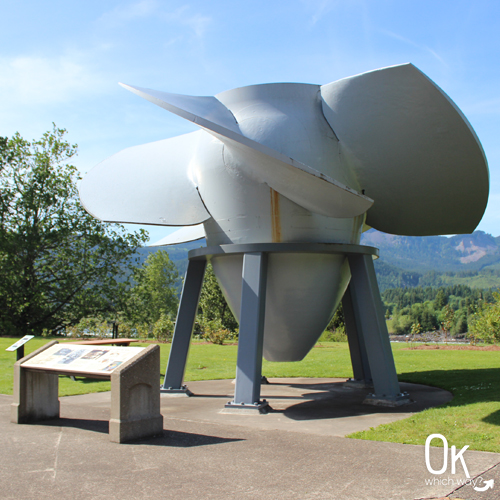
Pill Box
Bonneville Lock & Dam were a potential threat during World War II. Armed guards used these tiny cement shelters to defend the area.

The Spillway
The spillway was open the day we visited, allowing water to gush through. This water is not used to produce power, instead it allows young migrating fish through as they continue their journey to the ocean. Sometimes, after very wet winters, the spillway is open to let more water flow downstream.

Geocaching
We love geocaching and am thrilled that Park rangers maintain five geocaches at the lock and dam. There are numerous others scattered throughout the Columbia Gorge.
Other Places to Explore in Northern Oregon


